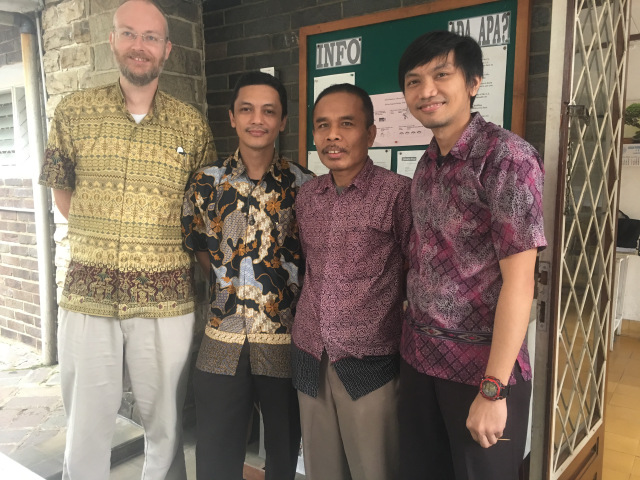
by Matt and Sora Colvin | Nov 30, 2016 | Indonesia
Bandung is a huge city, but there is beauty if you slow down and look. Here are some things that caught my eye in November.
A snail moves across our front porch.
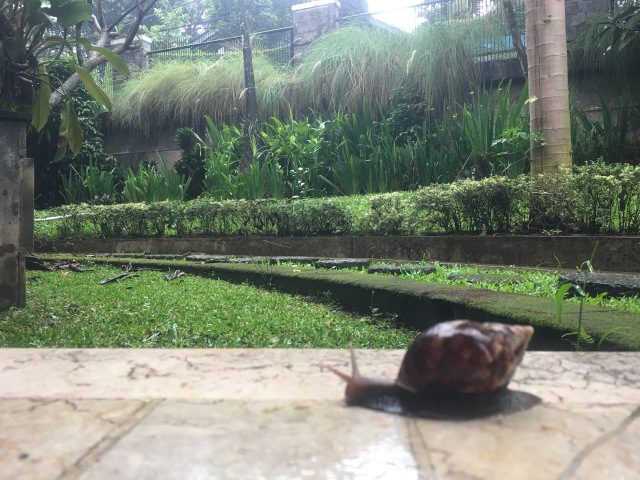
Moss covers hexagonal paving stones at IMLAC.
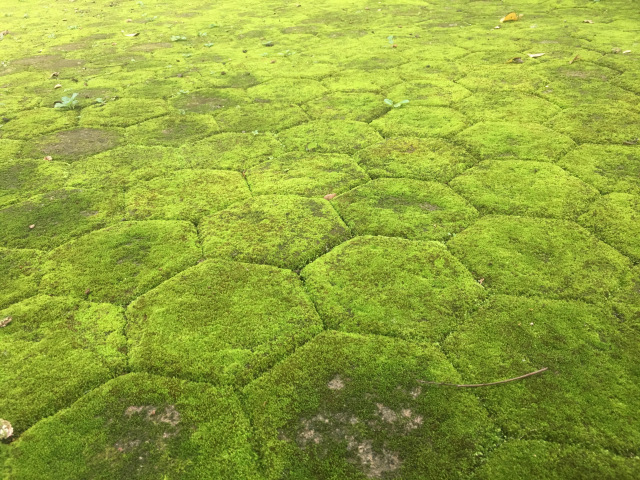
Sora’s homemade bread, shaped for Holy Communion.
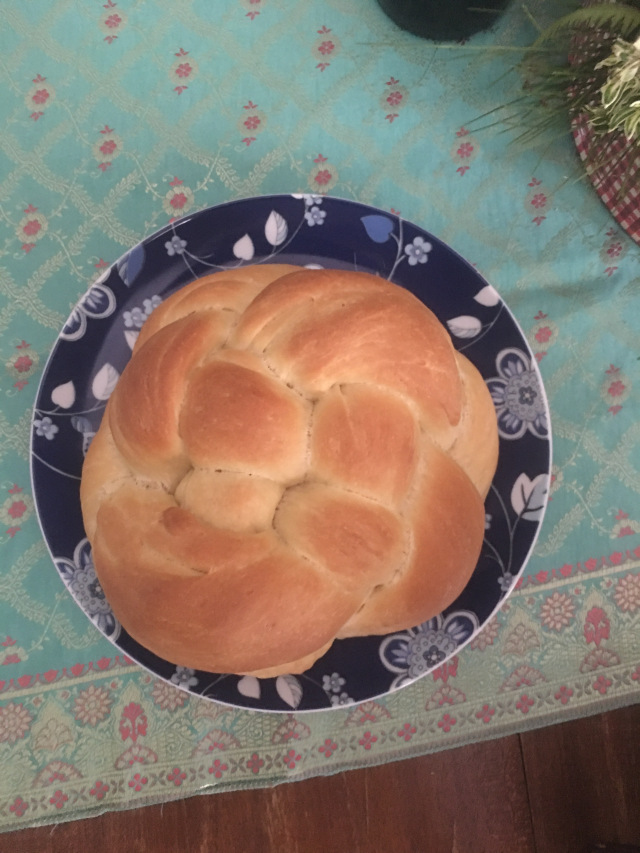
Bandung under the clouds from a warung on Jalan Punclut.

The hem of a batik shirt:

Rainwater courses down a drainage ditch past ferns and stone walls:

Matt with IMLAC tutors Michael, Nelson, and Ricqi:
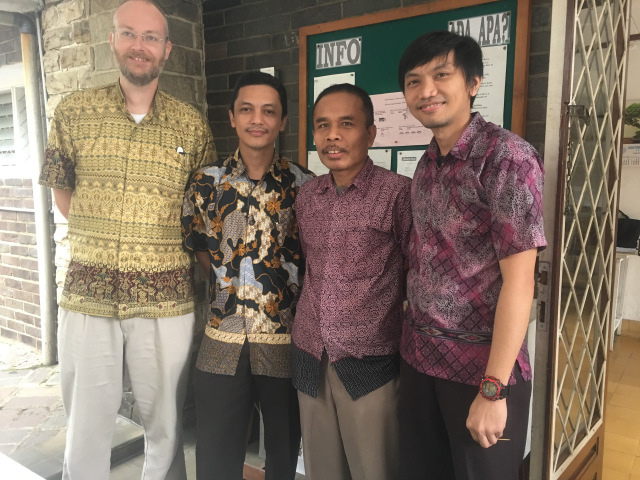


by Nita Dempsey | Sep 22, 2016 | Indonesia
We’ve been in Bandung since July 29th now, and we have our plates full with language learning. That’s our main task this year: get the language down well so that we can do the things God has prepared for us to do, both those we already have planned – teaching pastors Greek and Hebrew, pastoring a church – and those we can’t know yet, but which are all already known to God.
Here is a sort of medley of photos from the first two months, with captions. They’ll give you a flavor for what our life is like here.
Here’s a panorama shot of the IMLAC (Indonesian Multi-Language Acquisition Course) campus where we spend four hours every day working on Bahasa Indonesia with several different tutors.

This shot is taken from the perspective of the ping pong table that Matt uses during our 20 minute break. As you can see, it’s a really lovely environment in which to study.
IMLAC has a sense of humor. Its classrooms are named after islands of Indonesia, and there is one called “Kalimantan” (Borneo). “Kali” also means “multiplied by” or “times” in arithmetic. So we get this label on the room:
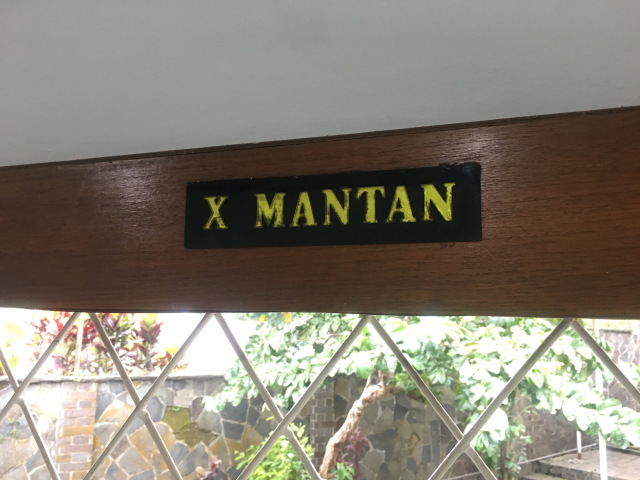
While driving in late August, we passed any number of roadside stands selling goats for the Idul Adha sacrifice (commemorating Ibrahim’s narrowly-averted sacrifice of Ismail):
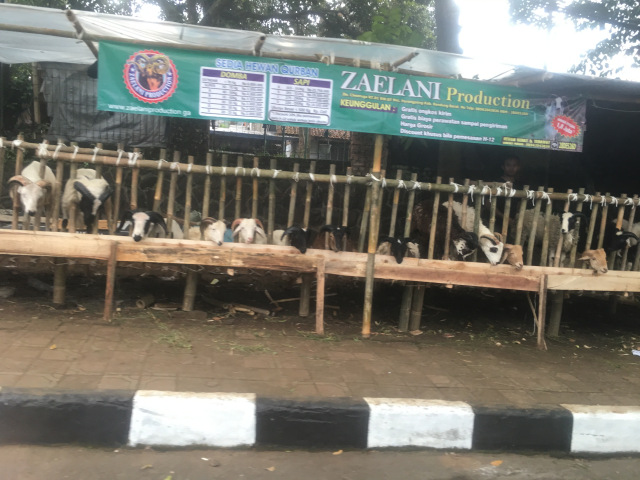
Here’s a typical view out our car’s windshield on the way to school. Our street is narrow, about 1.5 car widths across, so we have to “take turns” with other cars. But most traffic is not cars at all: motorcycles are ubiquitous in Bandung.
The number on the dashboard is our carpool pick-up number for Cahaya Bangsa Classical school, where Ezekiel is enrolled in 9th grade. He has probably made the best adjustment of any of our kids, which is a welcome surprise given how hard a time he had when we moved to the Philippines almost 4 years ago. He’s doing great in his classes and enjoying playing on the basketball team, where his height serves him well.
Speaking of height, here I am with Pastor Henry S., assistant pastor at St. Paul’s. This photo was taken at the reception for the wedding of another pastor in the GAI, Raphael B. Being 6’3″ is not an advantage off the basketball court: I have hit my head on low lintels and doorframes many times over the past two months.
Here’s a wider view of the huge reception room at the Grand Pasundan hotel (Sora and fellow pastor’s wife Deborah G. are at the far right):

This batik clergy shirt of mine has done duty for over a year now. I want to get some more made here, and we know a tailor who made the kids’ school uniforms for Cahaya Bangsa. But I’m shopping around for the right pattern. I liked this blue in one shop, but I’m hoping to find something even more colorful:
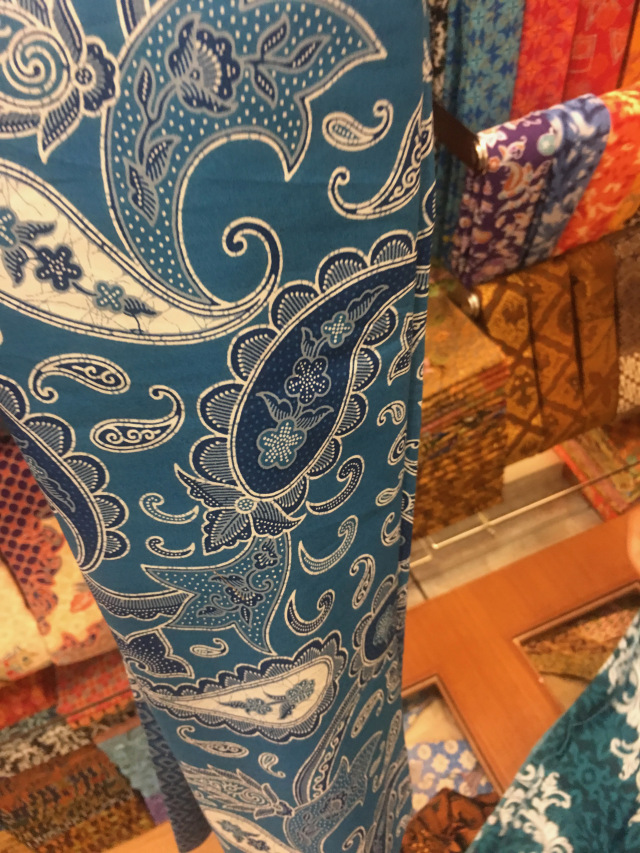
We have spent more than one Sunday at each of the three GAI congregations – St. Paul’s, St. Peter’s, and St. John’s. This last is located on the campus of the military police barracks in nearby Cimahi, and is the smallest of the three congregations. They have given us a very warm welcome. I have preached through a translator twice (Ibu Ridha and her husband Pastor Denny K), and administered both sacraments in halting and mispronounced Bahasa Indonesia.
Baptizing the youngest member of St. John’s:
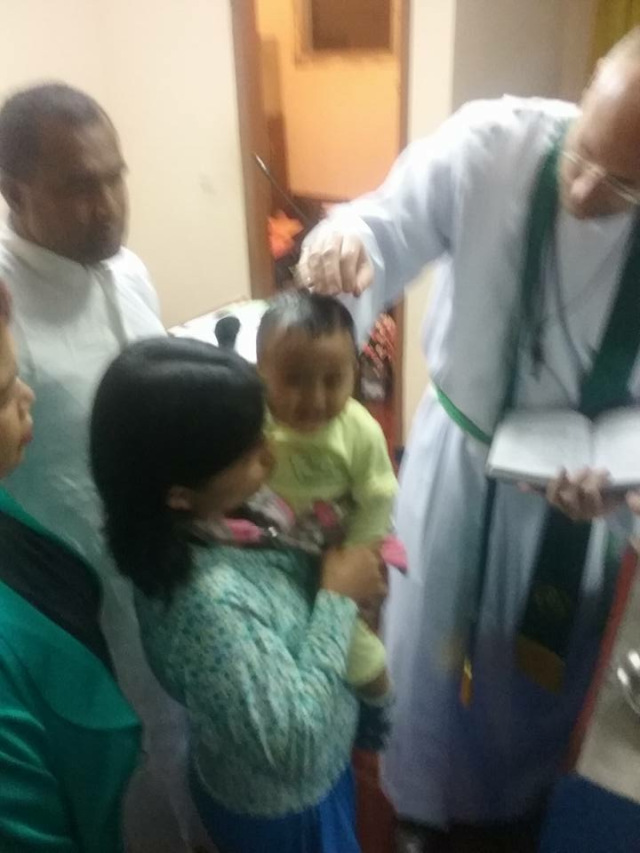
Here are our boys receiving communion from me and Pastor Yacob:
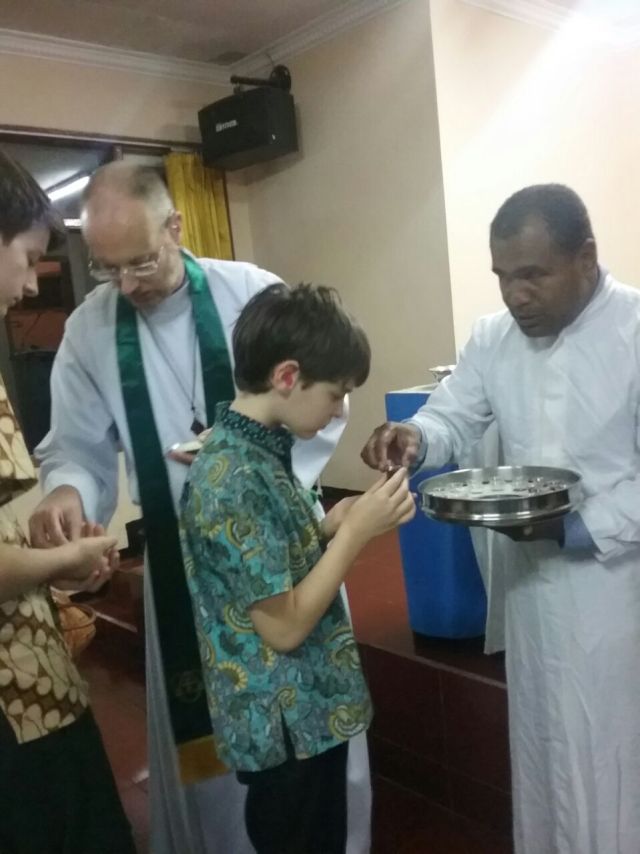
Our family is making an effort to get out of the city once a month or so, to escape the noise and pollution and traffic and decompress in a more beautiful environment – something we didn’t do often enough in the Philippines. Most recently, that meant a trip to nearby Lembang, about 45 minutes away from Bandung proper. We passed an awesome house on the way.
We went to Maribaya, where Sora and I had lunch and enjoyed the sound of the waterfalls while monkeys played in the trees beyond:
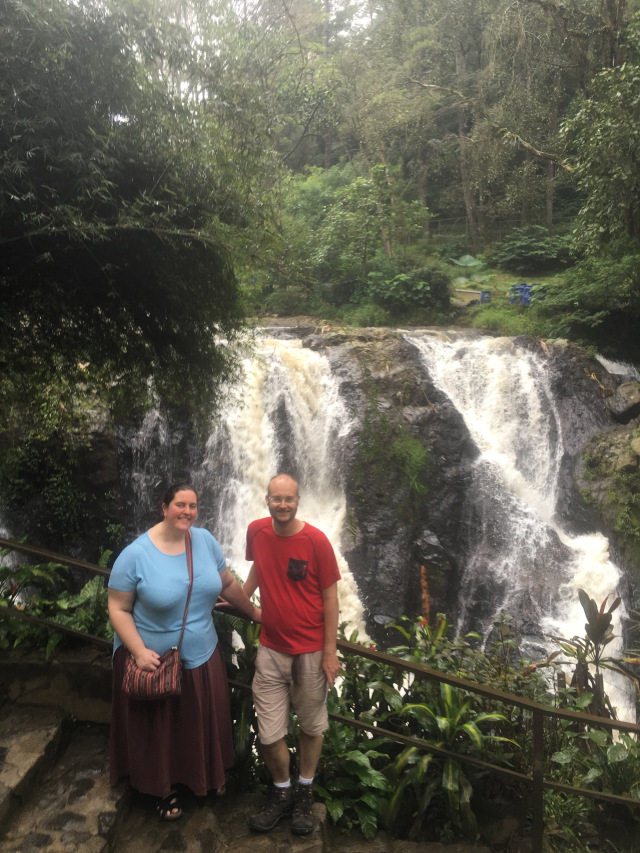
Later, we took the kids to the hot springs, which were very relaxing.
So that’s a slice of life for us here in (and out of) Bandung.
We won’t pretend this isn’t a harder cultural adjustment for us than the Philippines was. For one, the stakes of language acquisition are much higher: without the Bahasa Indonesia, I won’t be able to help the GAI with pastoral training in the ancient languages or the Scriptures. It’s not like the Philippines, where most men with sufficient education to benefit from my instruction had sufficient English as well. Here, the language is make-or-break for our ministry. We’re working hard at it, but we need to find more ways to get out and about in the city and strike up conversations with Indonesian folks whom we haven’t met before. We appreciate your prayers for our family as we continue to live and study in Bandung, West Java.


by Matt and Sora Colvin | Jun 14, 2015 | Indonesia
If our kids are looking more colorful than usual, it is because they’re wearing batik to their first Indonesian worship service.
It has been a mixed visit so far. For me, a fruitful week of ministry. For Sora and the kids, a painful time fighting the sort of digestive tract illness that we thought we would not experience since we were coming already from the Philippines.
I preached on Psalm 42 & 43 for GAI St. Paul’s in Bandung, Indonesia this morning. Many thanks to Pr. Denny Kussoy for translating my sermon.
The congregation on Sunday included many students from my week-long intensive class at the Bible College.
At lunch on Sunday, Rev. Yopie Buyung explained that he believes Biblical theology (in the technical sense) is greatly needed in Indonesian churches. I believe it. The delighted looks of the students as I explained how the New Testament claims Jesus to be God made it clear that they had not heard it put this (Jewish, Old Testamentish) way before, and that they will be USING these arguments in their own conversations with those who do not know the Lord, or deny that we should worship Him, or who think that “it is far from God’s glory to beget a son”.
Here are the essay assignment questions that I left for the students to write. (Pak Yopie translated them into Bahasa Indonesia.)
Essays:
In 10 pages or less, answer ONE of these questions:
1. Explain how the NT epistles and the book of Revelation identify Jesus as divine while still holding to monotheism.
2. Explain how Jesus and the four gospels use the Old Testament to claim that Jesus is identified with the God of Israel.
3. List and explain five main ways that the OT asserts monotheism and show how the NT used those ways to say that Jesus is included in the identity of Israel’s God.
Unfortunately, our family has been dealing with some sickness. Three kids came with me to church, wearing their new batik clothing. Sora stayed back at the guest house with Naomi, who is still recovering. Later, Isaiah and Hosanna also lost their lunches. Everyone is on the mend, however.
We have one more day in Bandung. Rev. Yopie and his wife Hertina and younger son Rexa have been taking very good care of us. Indonesian hospitality is justly famous, and Pak Yopie’s family has been amazing in that respect.
Tuesday, we head to Jakarta for four days, then to Phnom Penh, Cambodia, en route to meet with our SAMS directors and other SAMS missionary families at a retreat in Kep.
Pray that:
– Our kids will recover quickly, and that we will have no more illness on this trip.
– We may have a pleasant and uneventful train ride full of beautiful scenery from Bandung to Jakarta.
– The STT St. Paul’s students will continue to pursue the Biblical approaches to Christology and theology that I introduced them to in the lectures this week, and that the Lord may bless those methods with good fruit.
– That our kids will continue to be good ambassadors for our family and the REC and ACNA. The boys especially have done a good job so far, even though they don’t like being the center of attention. (Hosanna on the other hand, loves being the center of attention, and is apparently in her element being greeted and photographed, whether by Filipinos or Indonesians.)
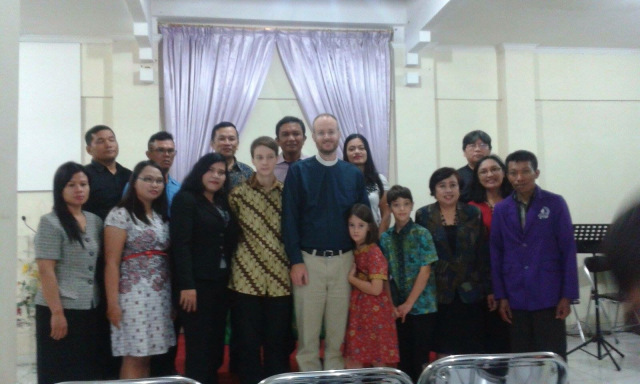
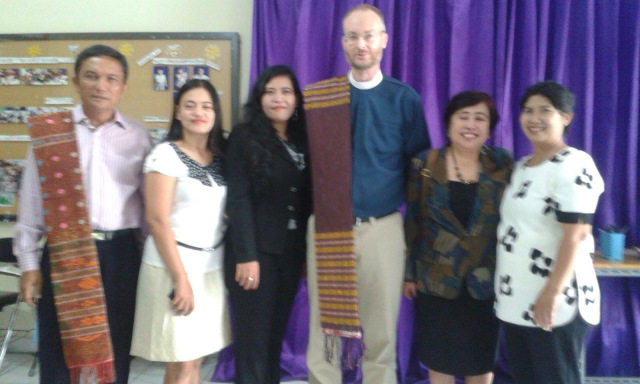
Thanks to Natalina H for the pictures!
by Matt and Sora Colvin | May 1, 2015 | SAMS Missionaries
I’m feeling a bit remiss about blogging. We keep to our deadline for publishing our monthly newsletter, but it’s easy to forget to write on this blog, and that for two reasons, both of which are good for missionary work, but not for missionary communication: first, life in the Philippines feels more “normal” for us than it did during our first two years; we encounter less that seems remarkable and needing to be photographed or shared. Second, we are both crazy busy with our respective ministries and have a hard time carving out time to blog.
Here are some photos from March and April, which may be taken as fairly representative of what we’ve been up to:
On the way home from dropping the kids at school one morning, the words of the Psalmist came to mind: “Many bulls have surrounded me; strong bulls of Bashan have encircled me.” OK, maybe just cows, and a calf that decided the middle of the road looked like a good place to enjoy sunbathing.
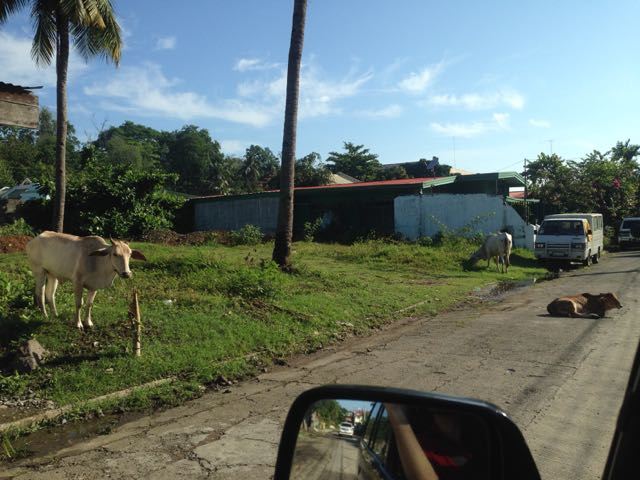
Sora continues to do outreach with other midwives from the birth clinic to bring prenatal care to the women of Isla Verde. Here, laundry hangs on a line and bicycle taxis (pedicabs) ply the streets beneath the coconut palms, while the ubiquitous Coca-Cola ad serves as a silent missionary of Western consumerism even in this very poor neighborhood.
Of course, the birth clinic continues to welcome Filipino babies into the world, and Sora continues to supervise shifts and take care that they arrive safely. Here are three from the past few months:
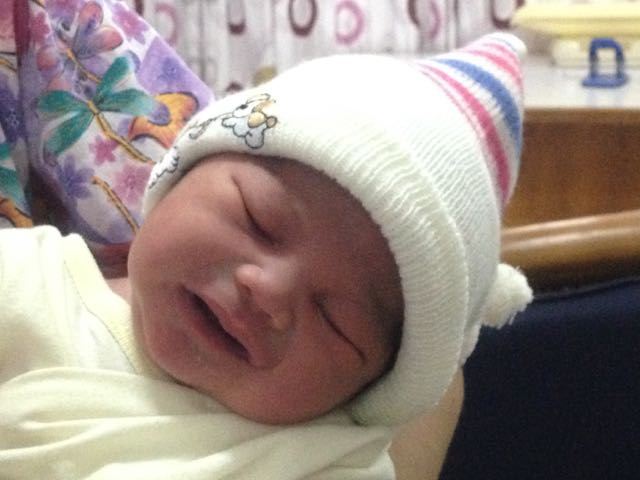
Sora continues to teach, too. Most recently, she’s been teaching statistics for this enthusiastic bunch of student midwives. Here, the students are lined up in a “living histogram” by height:
Water lillies from Sora’s visit to Thailand in March:
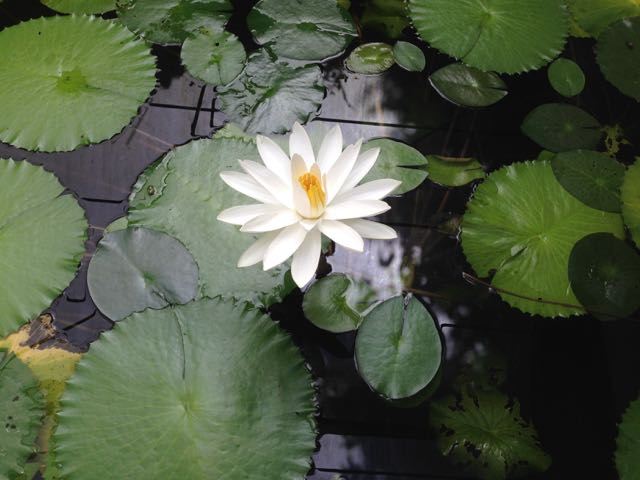
Matt’s ministry continues apace. Introductory Greek is finished now, so we have moved on to Hebrew, while continuing to read the Greek New Testament so that students don’t lose their skills. Here, Carl, one of Matt’s friends who has been with him from the beginning of his classes here in Davao, puts up answers to the second Hebrew homework assignment on the whiteboard.

by Matt and Sora Colvin | Mar 23, 2015 | SAMS Missionaries
A truck has been parked on the street leading to the clinic for months now. It is a disabled dump truck parked with its box in an elevated position. Since it is a convenient distance from a concrete wall, an enterprising fellow stretched some tarps across the intervening space and turned the truck into a dwelling, complete with a refrigerator. To make it feel a bit more like home, he also painted various parts of the truck in brighter colors: purple, yellow, green. I say “he”, but I’m pretty sure there were multiple people living there. A family?
Well, someone evidently persuaded them to move out, for the truck is now no longer inhabited. It’s not running either. But that doesn’t mean its usefulness has been exhausted. Behold, what Pinoy ingenuity has devised:

Yes, that is a basketball hoop. And it is at a pretty good height, with what can only be called a very expansive backboard. You could hit all kinds of interesting bankshots off that box.



